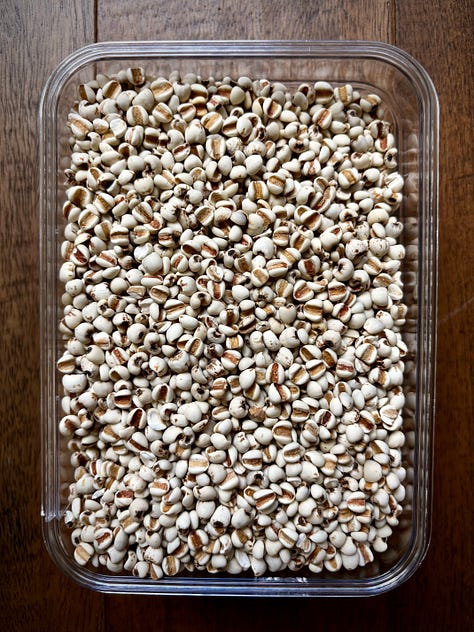How to Cook Adlay, A GF Grain
Adlay, aka Job’s tears, is a delicious, gluten-free alternative to rice for your meals.
Adlay has been used for cooking in China for at least 5,000 years. We know because archeologists in northern China found adlay—also commonly called Job’s tears—in a beer recipe dating from that time. You could try to make beer with Job’s tears, but I like to use it like rice—actually, I often mix it with brown rice to eat with a meal.
Adlay is a grass native to Southeast Asia, and it is cultivated as a cereal crop throughout Asia. The grain is a light-tan ball with a split down the middle of one side (see photos). The split makes it look a bit like barley (another name for adlay is Chinese pearl barley), but unlike barley, Adlay does not contain gluten. Though not as common as rice in Asian cuisine, adlay is often prepared as the starch in meals and can be made as a porridge. It also has been used in traditional Chinese medicine for a variety of conditions.
I like adlay’s mildly nutty flavor and firm texture, like al dente pasta. You can buy it at Asian grocery stores, where it often sits alongside other grains that aren’t rice—such as amaranth, which is also gluten free.
So how do you prepare adlay? It’s easy; you cook it just like rice, because it cooks through water absorption. One difference from rice is that it’s important to remember to soak adlay for at least 2 hours before you cook it. If you don’t, the cooked grain could end up a bit more al dente than your teeth would like. So it’s good to plan ahead and start soaking adlay in the morning, or even the night before you plan to cook it, so you don’t have to interrupt whatever you’re doing in the middle of your day to start the soak.
Cook adlay on the stovetop or in your rice cooker. On the stovetop, if you’re cooking a cup of adlay or a mix of ½ cup adlay and ½ cup brown rice, put the soaked grain in a 1-quart saucepan with 1 cup of water and bring it to a boil. I always add a pinch of salt and butter to the mix for flavor, but it’s not necessary. Once the water is at a rolling boil, cover the pan and turn the heat to low for 30 minutes. After 30 minutes, uncover and fluff the grains with a wooden spoon or spatula, replace the cover, and let it rest while you finish cooking the other dishes you’re preparing.
If using a rice cooker, follow your machine’s instructions for cooking mixed grains. Regardless of which method you use, you’ll want to soak the adlay beforehand (the instructions for my cooker included a reminder to soak the grains).
In future posts, I’ll share some recipes I’ve created using adlay, such as a Provençal-style salad and a beef and “barley” soup.
I hope you’ll enjoy eating this ancient gluten-free grain!







Thanks for sharing this! I’m going to have to look for adlay the next time I visit I my local Asian grocery store!